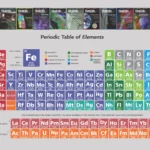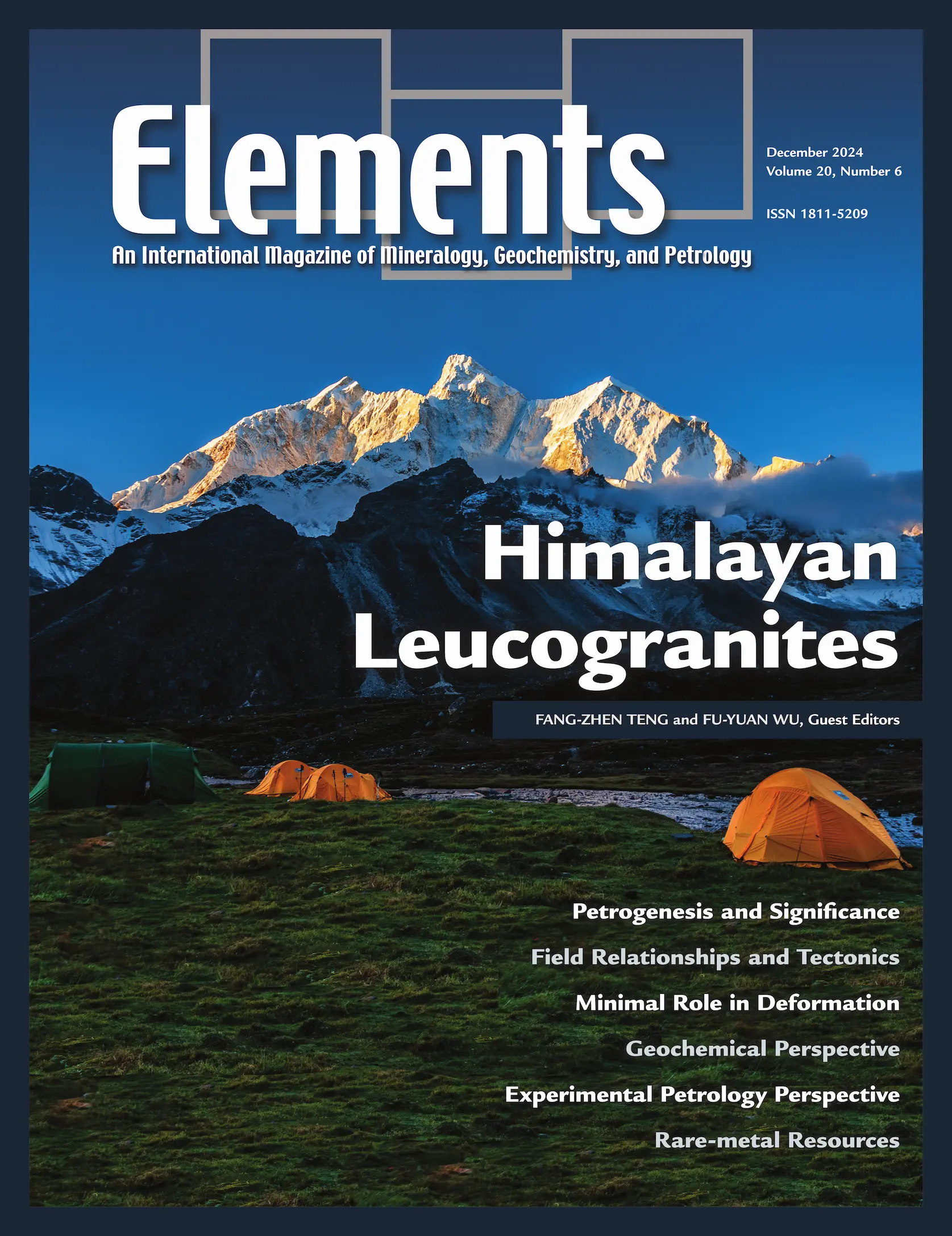
Periodic Table of Elements
October 26, 2024Himalayan Leucogranites, December 2024, Vol. 20, No. 6
$20.00
Himalayan leucogranites crop out intermittently over 2000 km along the Himalayan crest in the Himalayan-Tibetan plateau. They constitute some of the most well-studied granites in the world. They are considered to be purely crustal-derived melts and indicators of collisional orogenesis, and have greatly improved our general understanding of crustal anatexis, differentiation of felsic magmas, and tectonic evolution of the Himalayan-Tibetan Orogen.
Himalayan Leucogranites
December 2024, Vol. 20, No. 6
Himalayan leucogranites crop out intermittently over 2000 km along the Himalayan crest in the Himalayan-Tibetan plateau. They constitute some of the most well-studied granites in the world. They are considered to be purely crustal-derived melts and indicators of collisional orogenesis, and have greatly improved our general understanding of crustal anatexis, differentiation of felsic magmas, and tectonic evolution of the Himalayan-Tibetan Orogen. They provide a rare opportunity to explore the feedback relationships among geodynamics, tectonics, and magmatism in a classic continental collisional context. In this issue, we will describe our current understanding of the petrogenesis and significance of the Himalayan leucogranites by focusing on their tectonic and geodynamic background, source rocks, petrology, geochemistry, and links to orogenesis and economic resources.
Why You’ll Love Elements Magazine:
- Expert Contributors: Articles written by renowned researchers in the field of geoscience.
- Engaging Content: Join a community of readers who are passionate about Elements.
- Exceptional Quality: Each issue is printed on high-quality paper with stunning visuals and detailed illustrations that bring complex scientific concepts to life.
Order your copy of the December 2024 issue of Elements magazine today and explore Himalayan Leucogranites.
Related products
-
Diamonds, March 2005, Vol. 1, No. 2
$20.00Diamond, the fascinating ultrahard mineral, is the focus of considerable interest and scientific research. Recent advances particularly relevant to geoscientists include: diamond as a recorder of Earth processes from the perspective of inclusions, chemistry, and conditions of formation; synthesis for research applications and processing to modify color and physical properties, important to diamond gems and anvils; the implications of nanodiamonds from meteorites.
-
Phosphates And Global Sustainability, April 2008, Vol. 4, No. 2
$20.00Phosphorus is a unique element: it is essential to the existence of all living forms, and as such controls biological productivity in many terrestrial and marine environments; but when in excess, it leads to uncontrollable biological growth and water-quality problems. This has become a common environmental issue, resulting from our careless use of phosphorus in agriculture, yet phosphate ore deposits, from which fertilizers are produced, are a finite natural resource.
-
Arsenic, April 2006, Vol. 2, No. 2
$20.00Arsenic is an element known throughout history as a classic poison. Currently, very small but highly significant concentrations of this element in drinking water supplies are causing massive health problems to many millions of people in some of the world’s poorest nations, and more localised sources related to mining and processing are also a concern.




